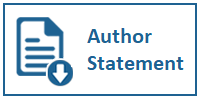Financial Ratios in Predicting Fraud
DOI:
https://doi.org/10.31937/akuntansi.v10i1.835Keywords:
Keywords: Accounting fraud, Altman Z-Score, Beneish M-Score, Financial Ratios.Abstract
The purpose of this research is to prove whether companies that commit accounting fraud with those who do not commit accounting fraud have significantly different ratio values using two accounting fraud detection models namely Beneish M-Score and Altman Z-Score. This study uses eight variables, namely debt to equity ratio, debt to total asset ratio, net profit to revenue ratio, current asset to total asset ratio, receivable to revenue ratio, inventory to total asset ratio, working capital to total asset ratio and revenue to total asset ratio.
The population of this study is a manufacturing company listed on the Indonesia Stock Exchange period 2010-2016. The total sample in this research is 57 companies with the number of observations as much as 212. Hypothesis testing by using different test of independent sample t-test and logistic regression.
The results of this study indicate that the variable debt to equity ratio, debt to total asset ratio, net profit to revenue ratio, working capital to total asset ratio and revenue to total asset ratio has a significant difference between companies that do accounting fraud with those who do not cheat accounting. As for the variable asset to total asset ratio, receivable to revenue ratio, and inventory to total asset ratio does not have a significant difference between companies that fraudulent accounting with those who do not commit accounting fraud.
Downloads
Downloads
Published
How to Cite
Issue
Section
License
Authors retain copyright and grant the journal right of first publication with the work simultaneously licensed under a Creative Commons Attribution-ShareAlike International License (CC-BY-SA 4.0) that allows others to share the work with an acknowledgement of the work's authorship and initial publication in this journal.
Authors are able to enter into separate, additional contractual arrangements for the non-exclusive distribution of the journal's published version of the work (e.g., post it to an institutional repository or publish it in a book), with an acknowledgement of its initial publication in this journal.
















